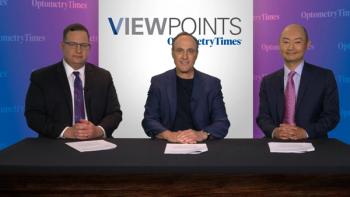
Dry AMD: Billing Updates for Remote Monitoring Centers
What optometrists should know about the American Medical Association’s establishment of 3 new CPT Category III codes to report patient-initiated remote retinal optical coherence tomography scans.
Episodes in this series

John Rumpakis, OD, MBA: Regarding some of the changes that have come out, I know that being specialists looking at the back of the eye, there are 3 new codes that came out in July of 2020 and they were regarding the remote application of OCT [optical coherence tomography]. There are 3 codes, and the reason I bring this up and why this is such a big deal, with ForeseeHome doing the visual field with remote monitoring, there’s no physician billing component of that particular test at home. It’s just a single test that the remote monitoring system then bills to the insurance carrier. And the only economic benefit that you get out of the practice in addition to the clinical benefits that you’re getting, you’re getting the ability to increase your level of E&M [evaluation and management] code because of either time spent or the complexity of the data that you’re reviewing. So that helps.
But the big change when they introduced the new Category III codes for home OCT, I’d like to talk about those because the reason there are 3 codes is because one of the codes allows for the billing center to monitor the patient, but the other 2 codes allow the physician to get paid. That’s a big change and that’s going to be a big impact. Now, there are currently not reimbursements from CMS [Centers for Medicare & Medicaid Services] on this, but this is a carrier determined code, which means that coverage will depend on the individual carrier. Whether it’s a commercial carrier or a Medicare Part C carrier, they will make an individual determination.
The 3 different codes are 0604T, 0605T, and 0606T. I’ll briefly describe them and what that means. The 0604T, I’ll read the definition. It’s OCT of the retina, remote; patient-initiated image capture and transmission to a remote surveillance center; unilateral or bilateral—it pays the same whether you do it on one eye or both; initial device provision, setup, and patient education on use of the equipment. That’s the first code. It pays for the setup of the home monitoring system for OCT.
The second code is 0605T, which is the code the data center is going to use. That allows for remote surveillance, technical support, data analysis, and reports, with a minimum of 8 daily recordings over a 30-day period. Then the 0606T code is the physician code. What that allows us to do is review, interpretation, and report by the prescribing physician or other qualified health care professional of the remote center data. And you get to bill for that code once every 30 days as well.
As this changes things, this is really going to impact the future of how we start to manage retinal disease.
Transcript edited for clarity.
Newsletter
Want more insights like this? Subscribe to Optometry Times and get clinical pearls and practice tips delivered straight to your inbox.


















































.png)


